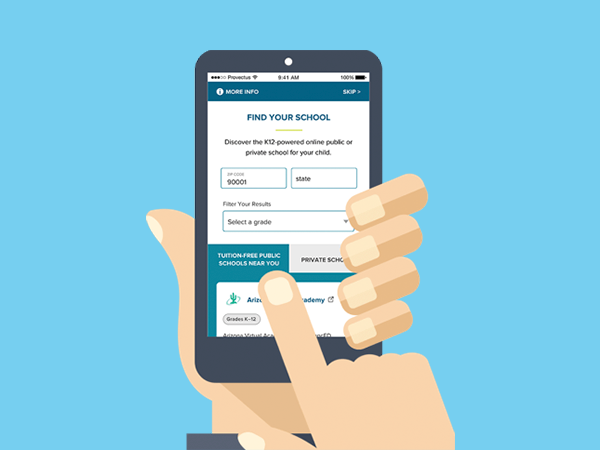
Online teacher certification programs are the best option to earn your teaching license without having to complete a college degree. There are many programs offered by colleges and universities. Some of these programs are accredited by The Higher Learning Commission. Other programs are offered through non-profit organizations. Depending on your field of interest, you can choose from a variety of programs. Online teacher training schools are often accredited by professional groups. The following are some of the online teacher training schools that are accredited by a professional organization.
TNTPTT Fellows
TNTP Fellows offer quality teacher training at a reasonable cost to students of all backgrounds. They are passionate about ending educational inequalities and systemic racism, and offer teacher training programs at an affordable price that prepares people for all classroom settings. Their programs are used by students all across the United States, from New Orleans to Baltimore. TNTP works with local schools to help teachers become highly competent in any subject or setting.
New York City Teacher Fellows is an alternative certification program for New York City teachers. This program trains new teachers by allowing them to teach full-time in public schools and work one-on-one with experienced professionals. The program starts with a preservice training period, which includes observation, practice and learning in a classroom. Fellows receive a master’s degree and can apply for initial teacher certificate in New York.

Teach for America TFA
If you've ever wanted to teach in the United States, you might want to consider applying to one of the Teach for America online teacher certificate programs. This program trains prospective teachers in teaching and helps them secure teaching jobs in economically disadvantaged areas. All applicants must meet minimum requirements. These include a GPA of 2.50 and citizenship or national legal residency status.
First, prospective teachers should know the timeline for applying to Teach for America. While it may vary depending on where you live, it is usually one to two years. Once you are accepted by Teach For America, staff will review your application to match you with the right vacancies in your area. They may even help you prepare for the test by providing study materials or connecting you to other applicants who have passed the requirements. However, if you fail an exam, you may have to defer your start date until you've retaken it.
DARTC University of Delaware
Two options are available at the University of Delaware for teachers who wish to become certified. It offers a fulltime certification program. There's also an alternative route available for people who have a bachelors degree but limited experience. This program offers a combination option, which is great for those who have limited time and money. Candidates can finish a two-year certificate program at the University of Delaware, teach in a Delaware charter or public school, or choose one of many endorsement options.
The University of Delaware's online teacher certificate programs are accredited by the National Council of Teacher Education. After earning a teaching certificate, students can pursue additional training in special education. Candidates who wish to teach special education need to complete 15 credits. Applicants who have an undergraduate degree in education can pursue additional specialization through a master's program in special education. The School of Education, University of Delaware, offers online education programs that rank among the top 30, nationally.

University of West Florida ABCTE Certification
The ABCTE certification is accepted in eight US states, including Florida. It is also recognized by Arizona, Idaho Mississippi, North Dakota and Oklahoma. Online certification is possible. ABCTE certification can be a great option for people who want to become teachers but don't have the opportunity to attend traditional classes. This certification is available for all levels of education, from beginning to experienced teachers.
To pass the ABCTE examination, candidates must also complete a state approved teacher preparation program. Florida certification requires that teachers pass the Florida Subject Area Subject Examination. Teachers who hold a bachelor's in education other than teaching may be eligible for professional education certification. The FTCE is offered by the Florida Department of Education.
FAQ
Why do many prefer taking eLearning courses?
These are the reasons. They are flexible. You don't need to attend classes at the same time and place. You can also learn online. Thirdly, these courses provide an opportunity to learn without any distractions. They are also economical.
What is the purpose of eLearning?
E-learning allows learners the opportunity to engage in learning activities from any location and at any hour. They can learn whenever they want, wherever they are.
E-learning also allows you to interact with people who share your interests. This interaction enhances communication skills and knowledge sharing.
The use of technology facilitates the transfer of information between the teacher and the student. The technology used should be robust enough to support the delivery of high-quality content.
E-learning helps to reduce costs and can also help you save money on travel for training purposes.
It saves time, money, and allows the learner/student to complete their coursework while working/traveling.
What are the different types of e-learning? What are their goals?
There are 3 major types of online learning:
-
Content delivery – This type of elearning is designed to give students information. There are many examples, including lesson plans and textbooks.
-
Instructional design: This type e-learning helps learners to develop their skills. Examples include tutorials and simulations.
-
Learning management – This type of eLearning gives instructors tools to organize and track student activity. Examples include discussion forums and virtual classrooms.
How much multimedia should an eLearning class contain?
The answer depends on what you want to achieve. If you're looking to quickly deliver information, less may be better. You may need to give training that will help people do things better.
The key thing is that you need to know what you want to achieve from your eLearning course. It is also important to know what learners want from your course. This will enable your course to be able to deliver the content necessary to accomplish your objectives.
Let's take, for instance:
It's best to give people lots of examples to learn about Microsoft Word. You would also need to demonstrate many different spreadsheets to help people learn Excel.
Also, consider whether or not you will use images or video to illustrate your concepts.
Video is great for teaching people how to do things, but it's not as good at explaining complex topics. It can also be expensive to produce. Images are cheaper to produce, but they don't convey the same level of emotion as a video.
Let's be clear: Before you start designing an eLearning course, you need to carefully consider what you want.
Does eLearning require an Internet connection?
It depends on what you want to do. There is no need to connect to the internet if you're just taking an online class. However, if you are going to use any kind of interactive features such as quizzes etc., then you need access to the web.
What does eLearning require?
E-learning is a time-consuming process that requires significant effort. E-learning also requires an understanding about how people learn. The learning experience should focus on what learners are looking to accomplish.
It must be relevant and interesting. Visual aids like images, animations, videos, and interactive elements should be included in learning materials.
E-learning must be enjoyable and engaging. It should emphasize learner motivation. It should provide feedback and encouragement to learners who are hard at work towards achieving their goals.
How do I start eLearning?
If you don’t have the skills to create online courses yet, it’s a good idea not to worry. Try creating a short tutorial or quiz.
Once you've mastered this, you can move on to more complex projects. It's a good idea to learn HTML before you start creating lessons with pre-built templates.
Statistics
- Hedonism incorporates intrinsic motivation, including novelty, challenge, excitement, and pleasure (Schwartz et al., 2012), which is likely to predict user perception of e-learning enjoyment. (sciencedirect.com)
- In the 2017 ATD research report Next-Generation E-Learning, 89% of those surveyed said that changes in e-learning require their staff to update or add new skills. (td.org)
- However, e-learning courses that are engaging, well-designed, and interesting are likely to be perceived as useful by e-learners (Roca & Gagné, 2008). (sciencedirect.com)
- According to ATD's 2021 State of the Industry report, technology-based learning methods, including e-learning, accounted for 80 percent of learning hours used in 2020. (td.org)
External Links
How To
How can elearning enhance traditional learning?
E-learning has existed for many years, and it is still in development. There are so many types of online learning that it is impossible to list them all. Here are some of the most popular:
-
You can use e-learning to complement traditional learning. One example is that a teacher could use an interactive whiteboard in order to illustrate a concept, while simultaneously recording her voice explaining the concept via audio technology. The audio file could be listened to by students after class to reinforce what they were taught.
-
E-learning can replace traditional learning. One example is that a student might log onto a website in order to access a tutorial regarding a specific topic. He/she can follow along with the video instructions, and then complete the exercise at her own pace.
-
E-learning can supplement traditional learning. A student could log on a website and access a huge library of information. They can browse the material and then choose which parts they wish to review.
-
E-learning allows students to learn outside the classroom. A tutor might give feedback via email on student work. Students can ask questions via instant messaging to other students.
-
E-learning can enable distance education. An example: A university lecturer could present lectures via the internet for hundreds of students across the globe.
-
Corporate training can be supported by e-learning. Many companies offer webinars to keep employees updated on new products and services.
-
E-learning can enhance academic performance. Students enrolled on a MOOC (Massive Open Online Course), for example, could engage in discussion forums, contribute content, and even earn badges when they complete certain tasks.
-
E-learning is a great way to improve your communication skills. A student could, for example, send an assignment to another student by email.
-
E-learning can improve critical thinking skills. For example, students could create blogs or podcasts to share their thoughts on a subject.
-
E-learning can assist with problem-solving. For example, a group of students might collaborate on a project via Google Docs.
-
E-learning can facilitate collaboration between individuals. For example, two students could meet up in person to discuss a problem. But, if one of them was studying at home they could communicate with each other via Skype.
-
Self-directed learning can be possible with e-learning. Students can also set their own goals for the course and set deadlines.
-
E-learning can encourage creativity. Students might upload videos showing them performing art projects.
-
E-learning can encourage independence. For example, a child might play educational games independently without parental supervision.
-
E-learning can encourage lifelong learning. For example, older people can continue to learn new things as long as they have access to computers and the Internet.